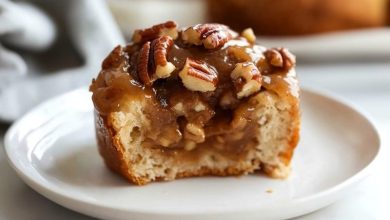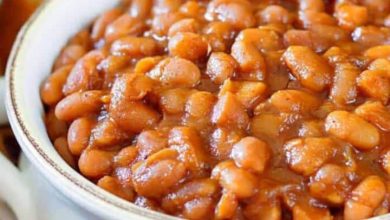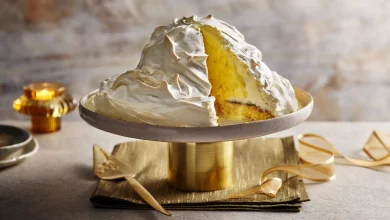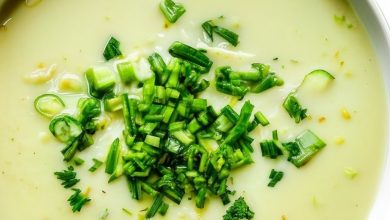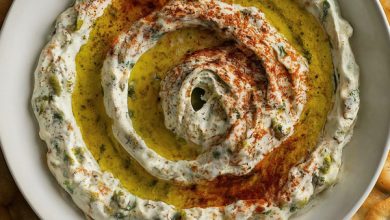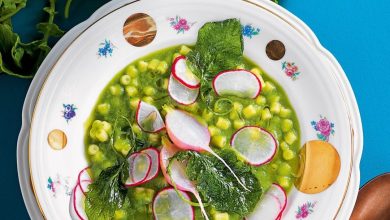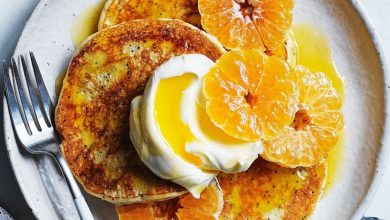Tangy Orange Bliss Cake 🍊🍰
Introduction
Welcome to this comprehensive guide to crafting a luscious Orange Marmalade Cake, a dessert that beautifully captures the vibrant and zingy essence of citrus fruits. This cake, inspired by the classic flavors of oranges and enhanced by the rich texture of marmalade and whipped cream, offers an indulgent experience for both casual sweet tooths and discerning dessert connoisseurs. Lovewithrecipes.com, a trusted platform dedicated to sharing culinary delights, presents this detailed recipe to empower home bakers to create a show-stopping dessert worthy of any celebration or casual gathering.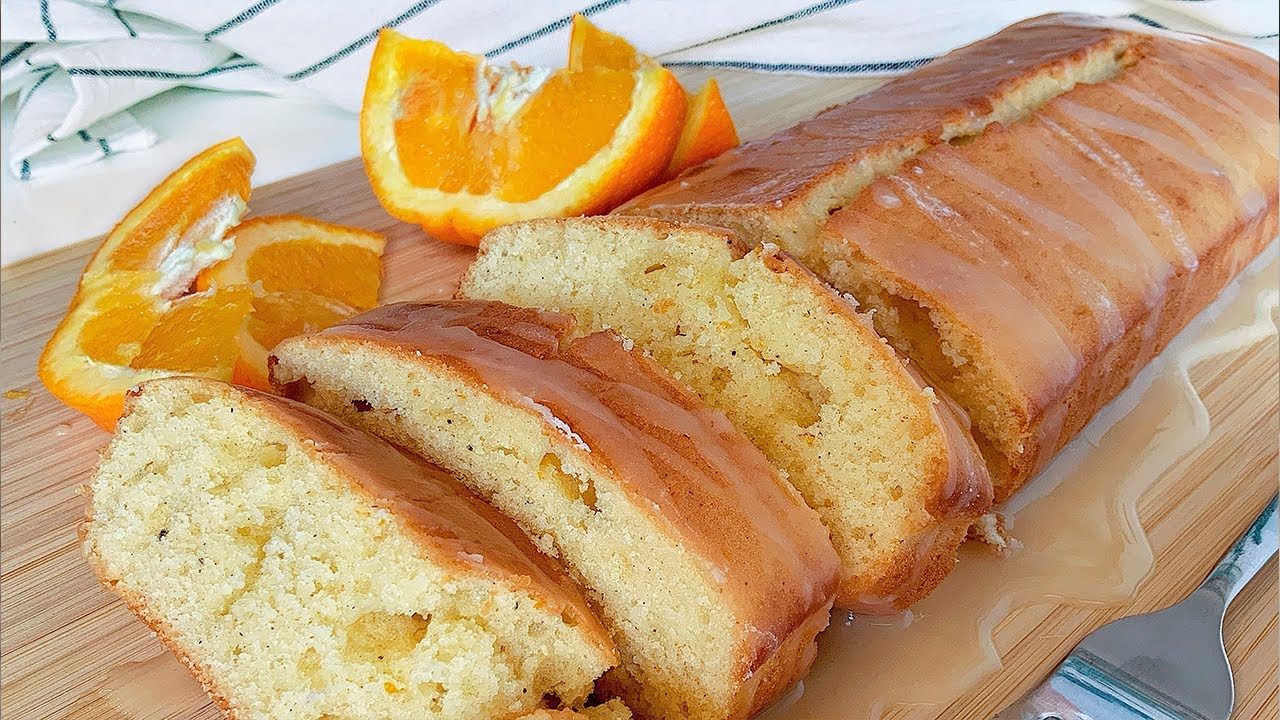
The allure of this cake lies not only in its bright, citrusy flavor profile but also in its layered complexity—featuring moist sponge layers, a tangy marmalade filling, and a delicate, fluffy frosting. Whether you’re preparing for a festive holiday, a birthday, or simply seeking a delicious treat to elevate your afternoon tea, this recipe offers an impressive yet approachable baking project. The balance of tartness and sweetness, coupled with the aromatic orange zest and vanilla, ensures a memorable taste that will delight every palate.
In this guide, you’ll find a detailed breakdown of the ingredients, step-by-step instructions, preparation tips, nutritional analysis, and ideas for customization and storage. Every aspect of this recipe is designed to maximize flavor, texture, and presentation, making it a perfect addition to your baking repertoire.
Time
- Prep Time: 45 minutes
- Cook Time: 20 minutes
- Total Time: approximately 1 hour 5 minutes
Needed Equipment
| Equipment | Description & Usage |
|---|---|
| Oven | Preheated to 325°F for baking the cake layers evenly. |
| Two 9-inch round cake pans | For baking the sponge layers. Ensure they are sturdy and heat-resistant. |
| Parchment or waxed paper | To line the pans, preventing sticking and aiding easy removal. |
| Mixing bowls | Various sizes for sifting dry ingredients, mixing batter, and whipping frosting. |
| Sifter or fine-mesh sieve | To aerate and combine dry ingredients thoroughly. |
| Electric mixer or stand mixer | For beating butter, sugar, eggs, and whipping cream to achieve the desired textures. |
| Rubber spatula | To fold ingredients gently and scrape batter from bowls. |
| Cooling racks | To cool the cake layers evenly after baking, preventing sogginess. |
| Pastry brush | Optional, for applying syrup or marmalade evenly onto cake layers. |
| Measuring cups and spoons | For precise ingredient measurement, crucial for baking success. |
| Small saucepan | To melt marmalade and prepare the orange syrup. |
| Whisk | For mixing frosting ingredients and ensuring a smooth consistency. |
| Spatula or offset spatula | For spreading frosting and marmalade smoothly over cake layers. |
| Cake turntable (optional) | Helps in evenly frosting and decorating the cake with minimal mess. |
Tags
dessert, citrus, fruit-based, layered cake, marmalade, orange, baking, celebration, festive, kid-friendly, easy to make, lovewithrecipes.com
Serving Size
This recipe yields approximately 8-10 slices, depending on the thickness of each cut. Given the richness and size of the cake, a typical serving is considered to be about 1 slice, ideal for sharing among family or friends.
Difficulty Level
Intermediate. While the process involves multiple steps—including preparing sponge layers, making syrup, melting marmalade, whipping cream, and assembling—the techniques are straightforward for those with basic baking experience. Attention to detail ensures a professional-looking, delicious cake.
Allergen Information
- Contains gluten (cake flour)
- Contains dairy (butter, heavy cream, sour cream, buttermilk)
- Contains eggs
- Contains citrus (oranges and marmalade)
Note: Substitutions can be made to accommodate allergies, such as gluten-free flour or dairy-free options, but they may affect texture and flavor.
Dietary Preference
This recipe is not suitable for vegan or dairy-free diets without modifications. It is, however, naturally free of nuts and soy, making it suitable for nut-free and soy-free diets, provided all ingredients are verified nut- and soy-free.
Course
Dessert, Cake, Celebration Cake, Afternoon Tea
Cuisine
Western, European, Fusion
Ingredients
Ingredient Details and Substitutions
| Quantity | Ingredient | Notes / Substitute Options |
|---|---|---|
| 3 cups | Cake flour | Can substitute with gluten-free flour blend for GF version; sifted for aeration |
| 1/2 tsp | Baking soda | Leavening agent to help the cake rise |
| 1/2 tsp | Salt | Enhances flavor |
| 1 cup | Butter | Unsalted, softened at room temperature; for dairy-free, use coconut oil or margarine |
| 2 cups | Granulated sugar | Standard sweetener, can use coconut sugar for a different flavor profile |
| 3 | Eggs | Large eggs, room temperature; for egg-free, consider aquafaba or commercial egg replacers |
| 1 tbsp | Orange zest | Freshly grated for maximum flavor |
| 1 tsp | Vanilla extract | Pure vanilla for best aroma and taste |
| 1 cup | Buttermilk | For dairy-free, substitute with almond milk + 1 tbsp lemon juice or vinegar |
| 1 cup | Granulated sugar (for syrup) | Same as above |
| 1 cup | Orange juice | Freshly squeezed for best flavor, or bottled orange juice without added sugars |
| 3/4 cup | Orange marmalade | Choose a high-quality, preferably seedless marmalade for smooth texture |
| 3/4 cup | Heavy cream | For dairy-free, substitute with coconut cream or cashew cream |
| 1 cup | Sugar (for frosting) | Adjust sweetness to taste |
| 1 cup | Sour cream | For dairy-free, consider coconut yogurt or cashew sour cream |
Instructions
Step 1: Preparing the Oven and Pans
Begin the process by preheating your oven to 325°F (160°C). Proper oven temperature is crucial to ensure even baking and the right crumb structure in your sponge layers. While the oven heats, prepare your cake pans. Take two 9-inch round cake pans and generously butter them, ensuring all sides and the bottom are coated to prevent sticking. Next, line each pan with parchment or waxed paper, which makes removing the cakes effortless after baking. For added security and ease, butter the parchment paper as well, then dust lightly with flour, shaking out any excess. This step guarantees a smooth release of the baked sponge layers, preserving their delicate structure for assembly.
Step 2: Sifting Dry Ingredients
In a medium-sized bowl, sift together the cake flour, baking soda, and salt. Sifting is a vital step in baking that aerates the dry ingredients, breaking up clumps, and ensuring an even distribution of leavening agents. This process contributes significantly to the cake’s rise and lightness. Use a fine-mesh sieve or sifter, and sift the ingredients into a clean bowl, tapping and stirring gently to combine thoroughly. Set this mixture aside while you prepare the wet ingredients; this separation helps maintain the integrity of the leavening process.
Step 3: Creaming Butter and Sugar
In a large mixing bowl, using an electric mixer or stand mixer fitted with the paddle attachment, beat the softened butter until smooth and creamy—about 1-2 minutes. Gradually add the granulated sugar, continuing to beat until the mixture turns pale, fluffy, and doubles in volume—approximately 3-4 minutes. This creaming process incorporates air into the fat, which is essential for the cake’s light texture. Scrape down the sides of the bowl periodically to ensure uniform mixing. The mixture should be visibly light and airy, indicating that enough air has been incorporated.
Step 4: Incorporating Eggs, Zest, and Vanilla
Add the eggs one at a time, beating well after each addition to ensure thorough blending. This gradual process prevents curdling and helps maintain a stable emulsion. When all eggs are incorporated, add the freshly grated orange zest and vanilla extract, mixing until evenly distributed. The orange zest not only enhances the citrus flavor but also releases aromatic oils that elevate the overall sensory experience of the cake. Be gentle but thorough, ensuring that all flavor components are well integrated.
Step 5: Alternating Dry and Wet Ingredients
With the mixer on low speed, start adding the dry ingredients in thirds, alternating with half of the buttermilk. Begin with 1/3 of the dry mixture, mixing until just incorporated. Then add half of the buttermilk, followed by another third of the dry ingredients, and so on, ending with the dry mixture. This technique prevents the batter from curdling and ensures a smooth, cohesive mixture. Scrape down the bowl as needed to incorporate any ingredients clinging to the sides. Do not overmix; stop once the batter appears homogeneous and has a velvety consistency.
Step 6: Baking the Cake Layers
Divide the batter evenly between the prepared pans, using a spatula or a scale for precision. Smooth the surface with the back of a spoon or spatula to facilitate even rising. Gently tap each pan on the counter to release any air bubbles, which can cause holes or uneven texture during baking. Place the pans in the preheated oven and bake for approximately 45 minutes. Check for doneness by inserting a cake tester or toothpick into the center; it should come out clean with a few moist crumbs. If it has batter on it, bake for an additional 2-3 minutes and test again.
Step 7: Cooling and Preparing the Syrup
Remove the cakes from the oven and transfer the pans to wire racks to cool for about 20 minutes. This initial cooling allows the cakes to set, making them easier to handle. While the cakes cool, prepare the orange syrup. In a small saucepan, combine 1 cup of freshly squeezed orange juice with 1 cup of granulated sugar. Heat gently over medium heat, stirring until the sugar dissolves completely. Bring to a gentle simmer, then remove from heat. This syrup will be used to infuse moisture and vibrant citrus flavor into the cake layers.
Step 8: Soaking the Layers
Once the cakes are cooled, poke holes across their surface at 1/2 inch intervals using a wooden skewer or toothpick. This step ensures the syrup penetrates deeply into the sponge, keeping the cake moist and flavorful. Using a pastry brush or spoon, evenly distribute the orange syrup over each layer, allowing it to soak in completely before adding more. This process enhances the cake’s moistness and imbues it with a fresh citrus aroma. Repeat for both layers, then let them rest until they reach room temperature.
Step 9: Melting the Marmalade
In a small saucepan, gently heat the orange marmalade over moderate heat until it becomes fluid and easily spreadable. Stir frequently to prevent sticking or burning. Remove from heat and allow to cool slightly—about 5 minutes. This melted marmalade will serve as a flavorful filling and topping, adding a luscious, sticky texture and deep orange flavor to each bite.
Step 10: Preparing the Frosting
In a mixing bowl, whip the heavy cream with 1 cup of sugar until stiff peaks form—this takes approximately 3-4 minutes. Use a whisk or beater at high speed, ensuring the cream is chilled beforehand for optimal volume. Once peaks form, gently fold in the sour cream, mixing until smooth and spreadable. This frosting is light, airy, and tangy, perfectly complementing the citrus-forward cake.
Step 11: Assembling the Cake
Place one cake layer on a serving plate or cake stand. Carefully remove the parchment paper and spread approximately two-thirds of the melted marmalade evenly over the top. This layer provides a zesty, sticky contrast to the soft sponge. Invert the second cake layer onto the first, gently pressing down to align edges. Remove the parchment paper from the second layer and spread the remaining marmalade on top, leaving a border around the edges for a decorative effect.
Using a spatula or offset spatula, apply the whipped frosting over the top and sides of the cake. For a polished look, smooth the frosting with gentle, sweeping motions. You may also pipe decorative borders or rosettes if desired. Chill the assembled cake for at least 2 hours to allow flavors to meld and the frosting to firm up, ensuring clean slices and a professional appearance.
Preparation Tips
- Ingredient Quality: Use fresh, high-quality oranges for zest and juice. The flavor hinges on the freshness and intensity of citrus components.
- Room Temperature Ingredients: Bring eggs, butter, and dairy to room temperature for easier mixing and better emulsification.
- Even Layers: Use a kitchen scale or ice cream scoop for uniform batter distribution to ensure consistent baking and appearance.
- Timing: Don’t rush cooling or soaking steps; patience ensures moistness and flavor absorption.
- Decorative Variations: Add thin orange slices or candied peel on top for visual appeal.
Nutritional Information
| Per Serving | Calories | Fat | Saturated Fat | Cholesterol | Sodium | Carbohydrates | Fiber | Sugar | Protein |
|---|---|---|---|---|---|---|---|---|---|
| 1 slice (approximate) | 724.9 kcal | 30.7 g | 18.7 g | 145.3 mg | 391.7 mg | 107.5 g | 1 g | 71.7 g | 7.5 g |
Tips and Tricks
- Flavor Boost: For an intensified citrus flavor, add a splash of Grand Marnier or orange liqueur to the syrup or frosting.
- Moisture Control: Do not overbake; a slightly underdone sponge is preferable to a dry cake.
- Frosting Texture: Chill the frosting before applying to prevent melting and ensure a neat finish.
- Presentation: Garnish with candied orange slices or zest for an elegant touch.
Add-ons
- Chopped candied ginger mixed into the frosting for a spicy kick.
- Layered with sliced fresh oranges for extra freshness and visual appeal.
- Use a fruit compote or berry coulis as additional topping for variation.
Side Dishes
- Light citrus salad with mixed greens and a honey vinaigrette.
- Fresh fruit platter featuring oranges, strawberries, and kiwi slices.
- Herbal tea or sparkling citrus beverages to complement the cake.
Improvements
- Incorporate a layer of mascarpone or cream cheese in the frosting for added richness.
- Add a splash of orange liqueur to the sponge batter for a boozy twist.
- Use a more intense orange extract or essential oil for a bolder citrus flavor.
- Experiment with different marmalade flavors, such as blood orange or lemon-orange blend.
Save and Store
Store the cake in an airtight container in the refrigerator for up to 3 days. For longer storage, wrap the cake tightly in plastic wrap and freeze for up to 1 month. To serve, thaw in the refrigerator overnight and bring to room temperature before slicing. The cake tastes best when served slightly chilled, allowing the flavors to meld beautifully.
FAQ
Can I make this cake ahead of time?
Yes, the cake can be baked a day in advance. Assemble and frost just before serving to maintain freshness. The flavors deepen after a day, making it even more delightful.
Can I substitute fresh orange juice with bottled juice?
Absolutely. Use a high-quality, fresh-squeezed or reputable bottled orange juice without added sugars or preservatives for the best flavor.
What if I don’t have a stand mixer?
A hand-held electric mixer works perfectly. Alternatively, vigorous whisking with a good quality whisk can suffice, but it may require more effort and time.
Is this cake suitable for gluten-free diets?
Yes, by substituting the cake flour with a certified gluten-free flour blend and ensuring all other ingredients are gluten-free, you can enjoy this cake without gluten concerns.
Conclusion
This Orange Marmalade Cake stands as a testament to the vibrant, refreshing qualities of citrus combined with the comforting richness of classic cake textures. Its layers of moist sponge, tangy marmalade filling, and airy frosting come together to create a dessert that is both visually impressive and palate-pleasing. Perfect for special occasions or an indulgent treat, this recipe from lovewithrecipes.com offers a delightful journey into the world of citrus-infused baking. With careful attention to each step and a few customization options, you can craft a cake that not only impresses visually but also leaves a lasting impression on taste buds.
Happy baking and enjoy every zesty, sweet, and tangy bite of your homemade Orange Marmalade Cake!
References
- “The Cake Bible” by Rose Levy Beranbaum – For detailed cake baking techniques
- High-Quality Marmalade Brands – For best flavor and consistency

